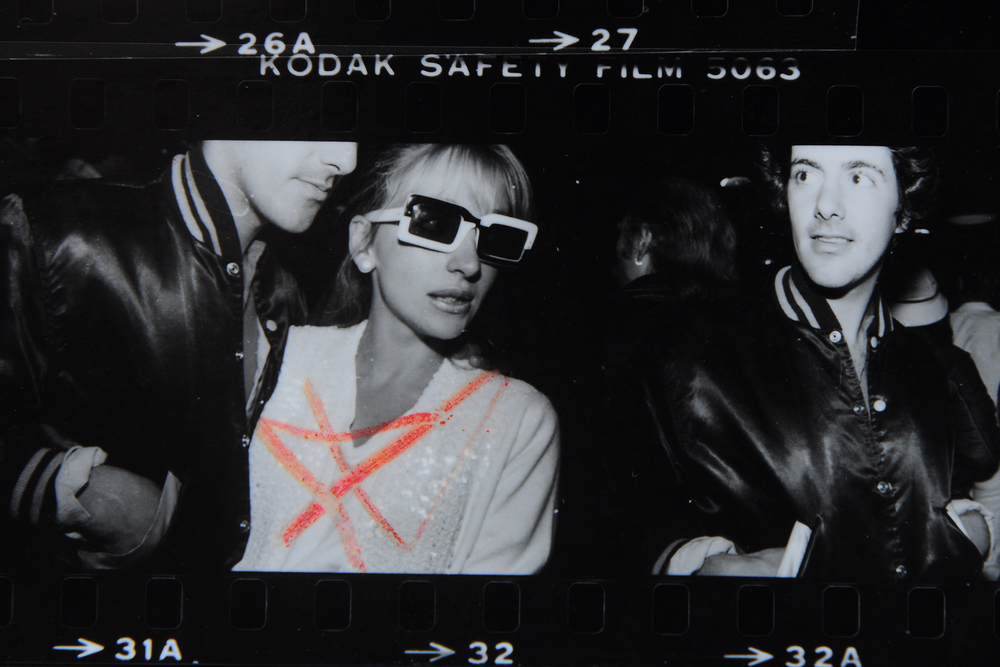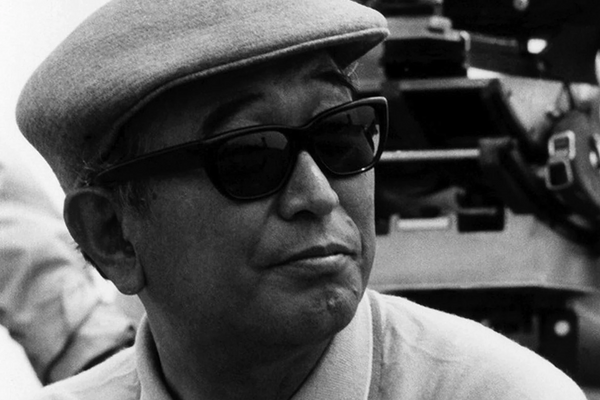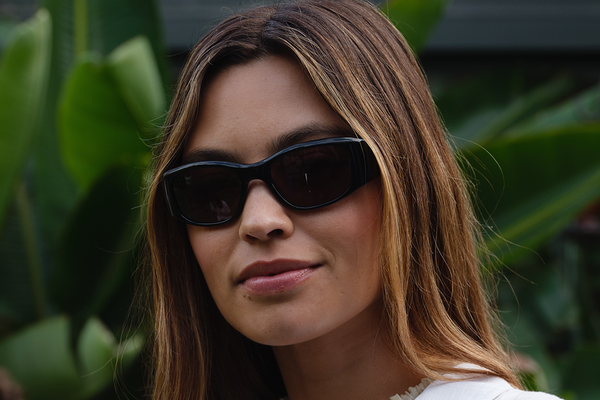The first thing that you notice walking into the joint is how glamorous the clientele is. Everyone looks like they are either going to or coming from a fabulous party. There’s a lot of catsuits and glitter, but also tank tops and leopard print shirts and band pins and plenty of butt-hugging denim. Much to your amazement, the guests here tonight are not merely passing through en route to some glitzy bar/grill opening. This place is their destination.

They come to socialize and show off their outfits and to serve looks to the affable guy shooting photos. They also come to drink a couple of beers and smoke a little brown weed. For the next four hours, this arty clubhouse, filled with the au currant music of Blondie and Prince and the Talking Heads and Micheal Jackson and Donna Summer - plus the latest whispers and rumors about the scene’s bullshitters, sweet talkers, and schmoozers - is in fact the center of a spinning universe.
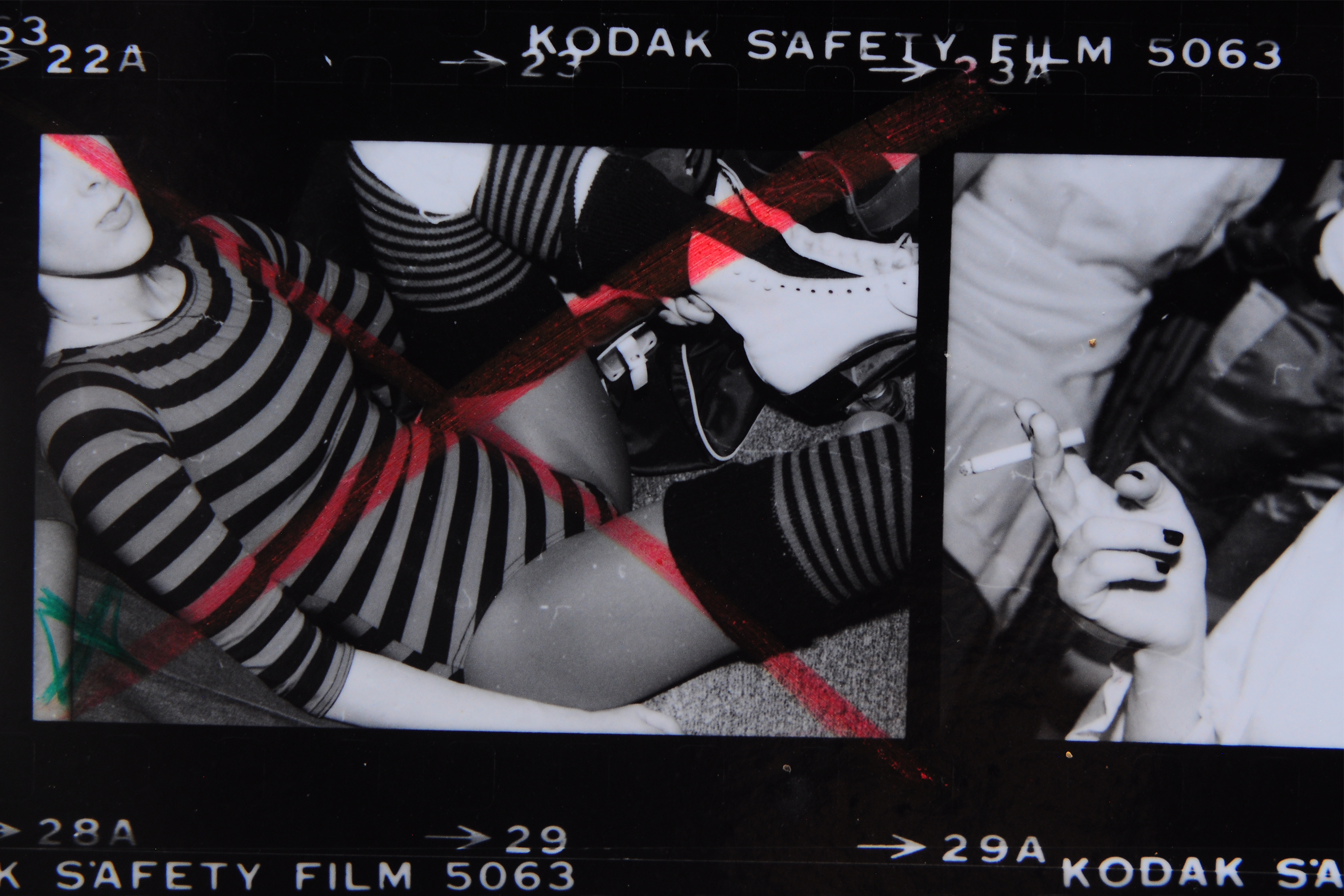

It is 12:14 on a Saturday night and an all-female band is getting ready to play at the center of the rink. The singer looks familiar. You think you remember seeing her introduce some terrible local band called The Germs at the Whiskey a few years back. It was a scary show attended by approximately 300 violent white dudes all sporting stupid haircuts and black leather jackets.

You hope that tonight’s entertainment will be better. You have high hopes, because this time the crowd is a lot cuter and the women outnumber the men by a pretty generous ratio. Out of the corner of your eye (your eye is always very busy here) you spot a group of two women and a younger man slam against a waist-high partition at a decently fast clip. They’re all laughing as they fall down, but it’s not (totally) due to any illicit substances.
They’re roller skaters and right now they are having the time of their lives.

It is 1980 and you are not on the dance floor of some decadent velvet-roped showbiz disco, you’re hanging at Flipper’s Roller Boogie Palace, the world’s very first (and only) roller skating nightclub of the new wave era, or any other era for that matter.

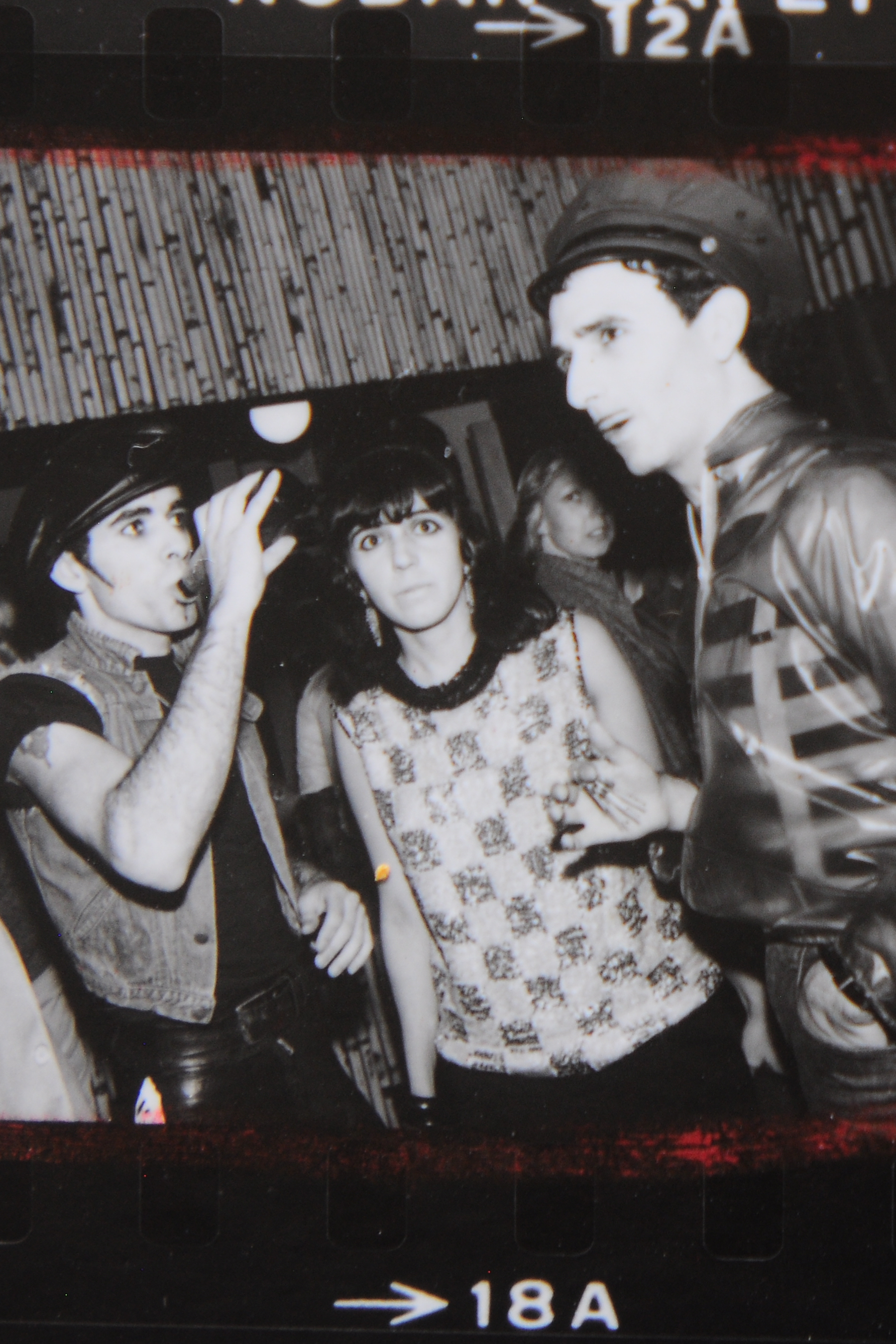
Located at the corner of La Cienega and Santa Monica boulevards, Flipper’s was a bar, nightclub, skate shop and full size roller skating rink that was open from 1979 to 1981. The immediate hook of the Flipper’s legend is that it was “Studio 54 on wheels.” People like Cher, Prince, Robin Williams, Jane Fonda, and Nile Rogers were all regularly spotted skating there. It was a very “in” place in a town obsessed with status and newness. This was a big deal because pre-Flipper’s, roller skating was considered dorky and suburban and decidedly un-chic.
While the celeb factor is cool, it doesn’t make for a very interesting LA story. In our quest to dig deeper, we rang up “Cisco” Dietz, who worked as Flipper’s in-house photographer for the entirety of the club’s existence.


Here’s his immediate recollection of the place: “Flipper’s was heaven. There was this incredible variety of people who loved going there. It wasn’t just that white West Hollywood set. Sure famous people came, but the collective energy was created by all these people from Compton and South Central and the valley and east side. It was an arena for fun where people could celebrate their own style and creativity. Also, it was cheap and accessible. You didn’t need to be a big shot to come and have a great time.
While the rink was open during weekdays and also offered more kid-friendly fare during off nights, the real action went down during Dietz’s shift, which was prime time party hours, every Friday and Saturday from 10 ’til late.

In a time when a lot of LA clubs were turning a little rough around the edges, Flipper’s provided a safe and welcoming environment to women, people of color, and other marginalized communities. “I don’t know if they were pumping LSD into the air or what, but from all my times shooting photos there, we never saw any fights or anything,” remembers Dietz. “People were a lot more concerned with celebrating life and looking good than they were proving how tough or famous or macho they could be. We were all in the Warhol energy of letting everyone be famous for 15 minutes and enjoying the movie that is life. It couldn’t last forever and it didn’t.
The club closed after just two years and a few months - cementing its status as a true “if you know, you know” LA landmark. But just as Flipper’s was closing its doors in 1981, another iconic LA skate destination, the legendary World On Wheels located on the corner of Venice and San Vicente Boulevards in Venice, was kicking off a 30+ year story that is still being written today.
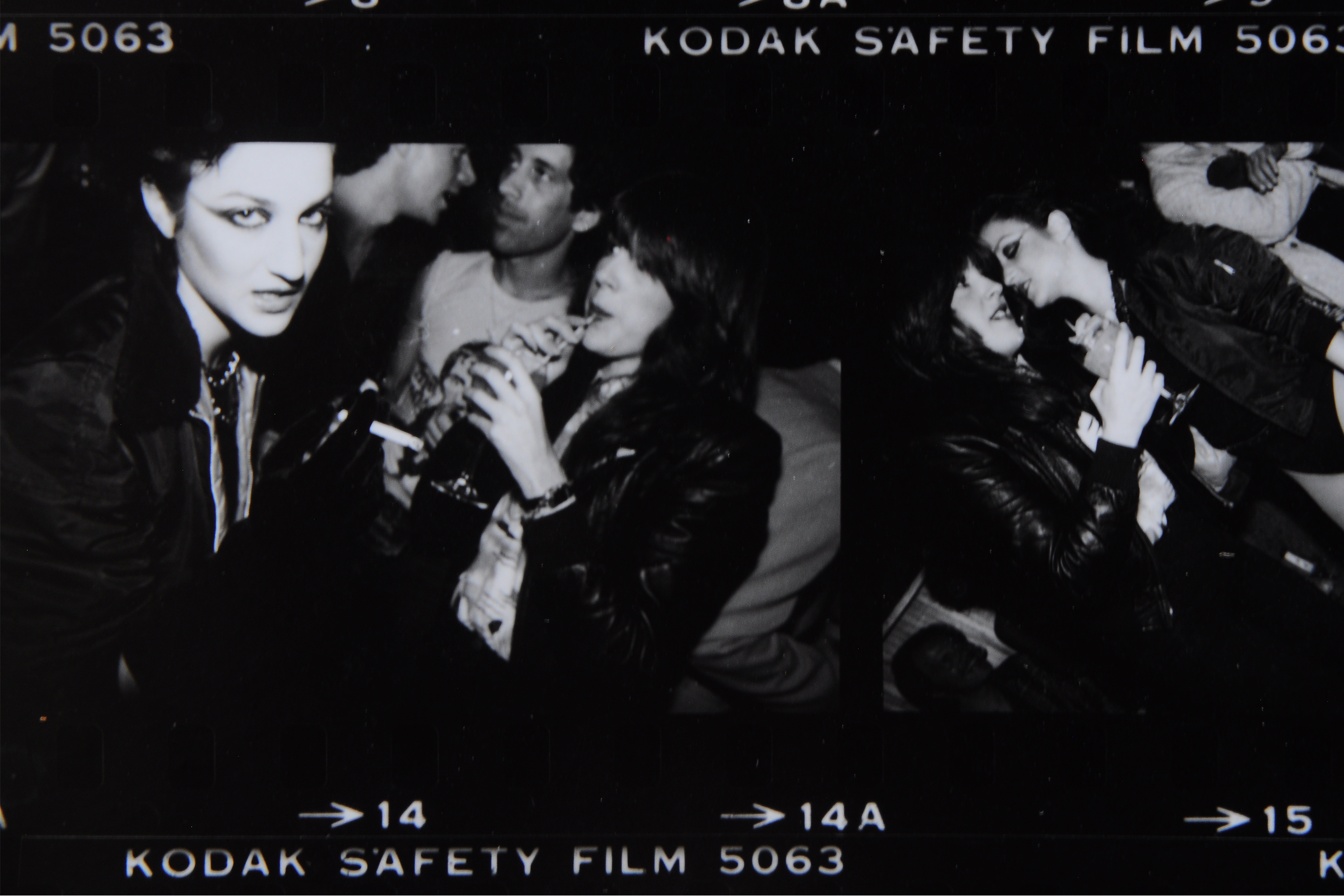
Sadly, the place has run into the usual commerce vs community troubles for the past decade, despite a recent infusion of cash from dearly departed rap legend Nipsey Hussle, who fought valiantly to have it permanently reopen.
“I wish it was still open because in my mind, it still exists,” says South Central native, multi-hyphenate artist, and former World On Wheels attendee B-Wade. “I learned so much about life and music and fashion and just how to show up in the world from my time spent there. It was a really nurturing environment.
Wade’s relationship to World On Wheels goes back to the ’90s, when the space served as neutral territory in a neighborhood known for a lot of intense gang activity. More critically, it was also a place that allowed for intergenerational and crosstown connections to take root and grow.
“You would go to an open session and see mothers and grandmothers sharing the rink with teenagers and six-year-olds who were having their birthday parties there. It was a safe haven smack in the middle of an inner community with a lot of problems,” he says. “We were all so grateful to the OGs, because they set the tone for the place. If someone was a fellow skater, you helped them out and showed them the way.
And then of course, there’s the music. Back before the time of All Algorithm Everything, local DJs would test out new tracks on the rink’s booming soundsystem. Anything that got the people moving would soon sell out at local shops. Rappers would play shows upstairs and sell their tapes in the venue’s parking lot.
“It was a true regional thing where you had that authentic, unfiltered West Coast flavor — G Funk and low riders and dudes with fedoras turning out with custom skates built on top of Stacy Adams wingtips,” says Wade. “The music informed our skating style. We learned how to lock into that funk BMP and skate elegantly and on beat. Our style could only happen in LA.
While plans to relaunch both Flipper’s and World On Wheels have been in motion for a while, it’s going to be a tough climb against the ever-present pressures of real estate interests. Still, skaters of all stripes remain hopeful that the good wheels of fortune will once again turn in their favor once community leaders see how much positivity is created by having a thriving, economically and socially diverse roller skating flourishing in their neighborhood. Everyone is keeping their hopes up, despite all the signals to the contrary. As B-Wade puts it, “Everyone needs a place like this - and no one is bigger than the rink.”
